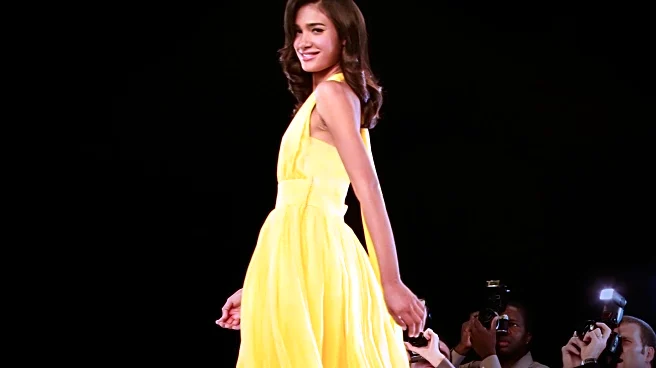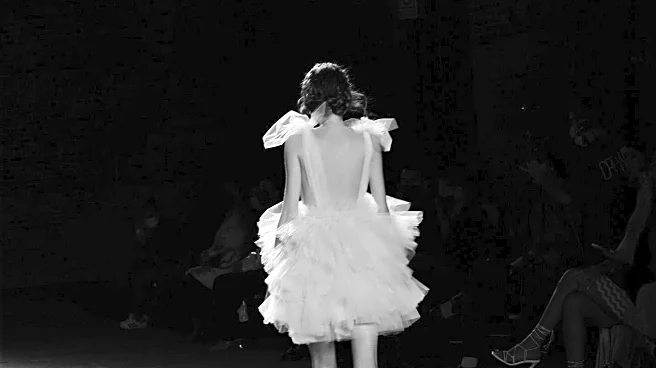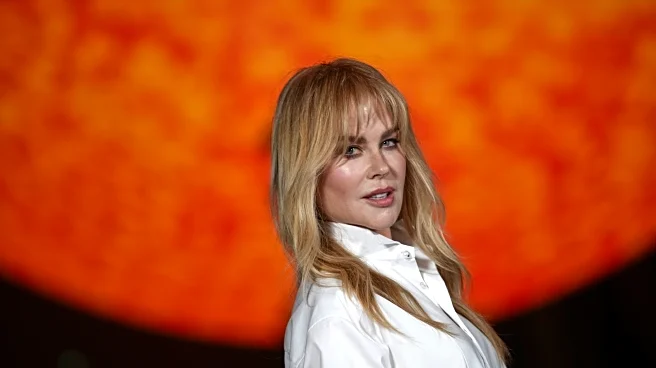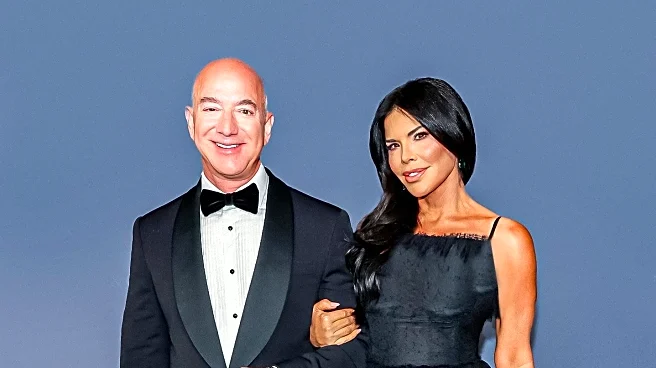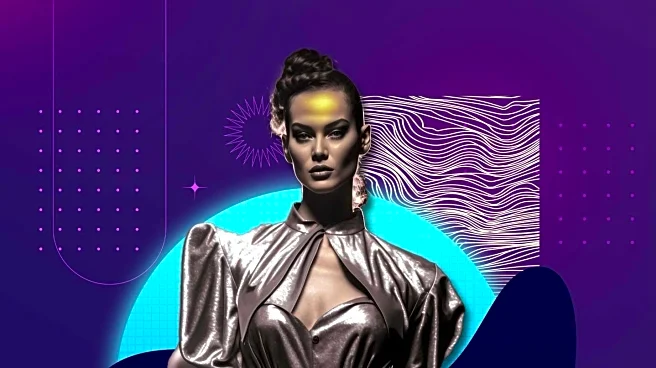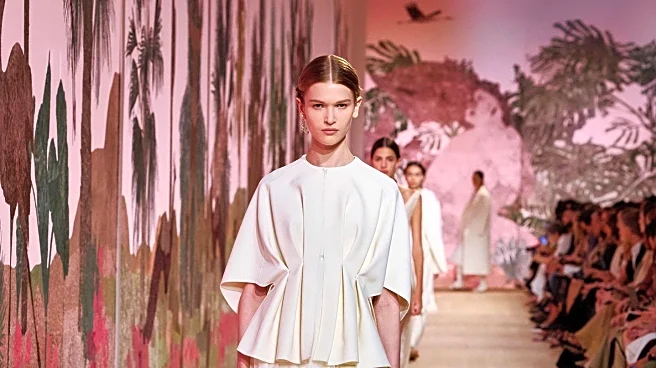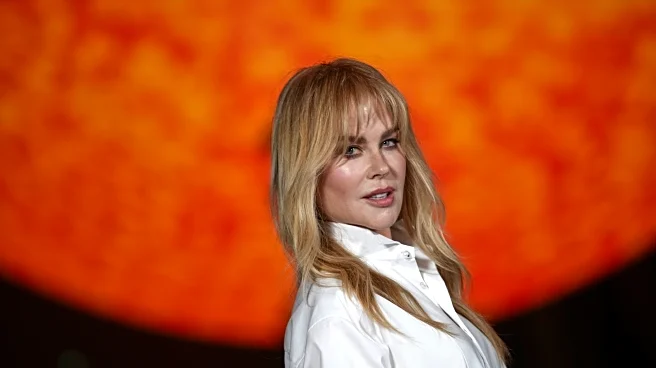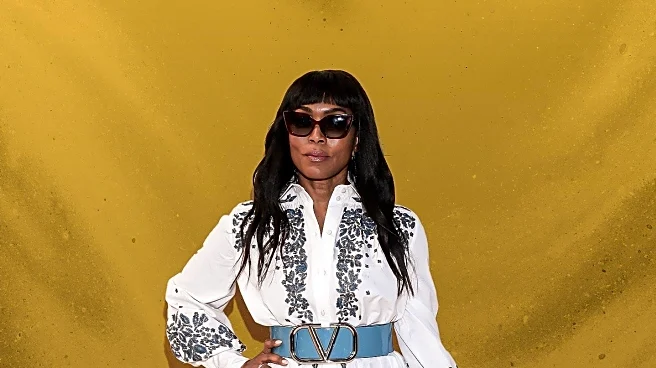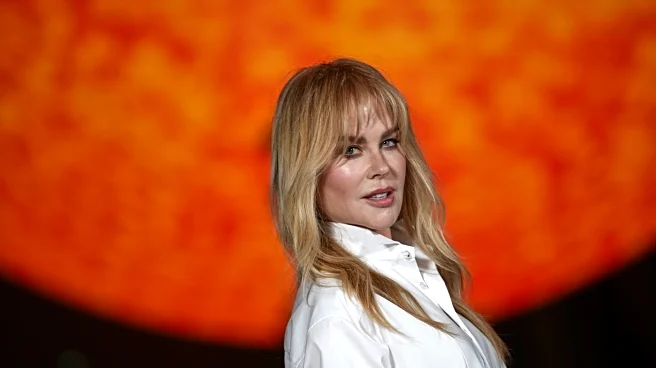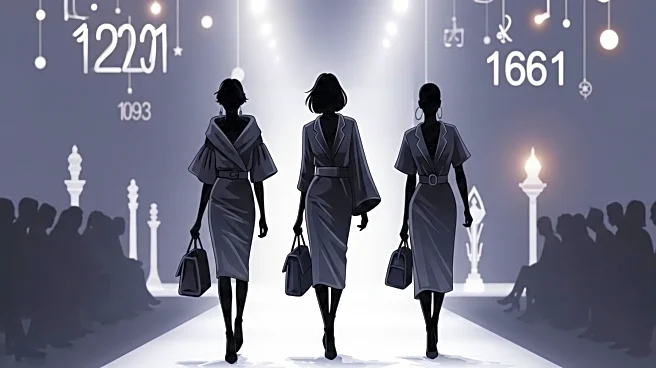What's Happening?
The spring 2026 fashion season has introduced a new wave of breakout models who have made significant strides on the runway. Among these models are Marylore Heck from Belgium, who opened for Rabanne, and Emaan Zishan from Canada, who showcased Duran Lantink's Jean Paul Gaultier. Noor Khan from Stockholm also made a notable impact by opening for Khaite and closing for Calvin Klein Collection and McQueen. This season was marked by 15 designer debuts, including Rachel Scott's early vision for Proenza Schouler and Matthieu Blazy's Chanel show. The models hail from diverse backgrounds, with Ivy Stewart from Scotland and Athiec Geng from South Sudan, adding to the global representation on the catwalks from New York to Paris.
Why It's Important?
The emergence of these breakout models signifies a shift in the fashion industry towards greater diversity and global representation. Their success on the runway highlights the industry's evolving standards and the increasing demand for fresh faces. This trend could influence future casting decisions and the types of models that brands choose to represent their collections. The presence of models from various cultural backgrounds also reflects a broader societal push for inclusivity and representation in media and fashion. As these models gain prominence, they may inspire new generations and contribute to changing perceptions of beauty standards worldwide.
What's Next?
As these models continue to gain recognition, they are likely to secure more high-profile contracts and collaborations with major fashion houses. Their success may encourage other aspiring models from diverse backgrounds to pursue careers in fashion, potentially leading to a more inclusive industry. Fashion brands might also adapt their marketing strategies to align with this trend, focusing on diversity and global appeal. The impact of these breakout models could extend beyond the runway, influencing fashion media and advertising campaigns to reflect a broader range of identities and experiences.
Beyond the Headlines
The rise of these models may also prompt discussions about the ethical dimensions of representation in fashion. As the industry embraces diversity, it must also address issues such as fair treatment, equitable pay, and the portrayal of cultural identities. Long-term, this shift could lead to more sustainable practices in model management and a reevaluation of the industry's impact on societal norms. The success of these models could also inspire collaborations across different sectors, such as film and music, further broadening their influence.

